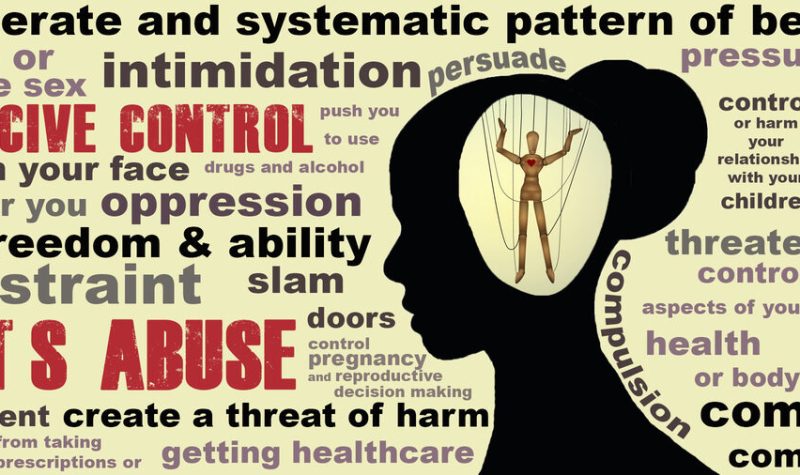By De Clarke
The Covid-19 lockdown has sparked an upsurge in domestic violence both in Canada and worldwide, as well as making it harder for support services to offer counseling and shelter for victims.
On April 15, 2020, I interviewed Tanya Henck, founding member of the first Cortes Island Women’s Centre which opened in January 2019. A combination of diligent sanitization and long microphone cables, plus a newly constructed and never-inhabited space, enabled us to set up for Covid-19-safe recording. (The room was so bare that you may hear a certain amount of natural reverb in the podcast.)
Tanya has lived on Cortes Island for 14 years, and has long been aware of the persistent and under-addressed problem of domestic violence. Every community whether rural or urban has to deal with this issue, she says, and Cortes is no exception. Yet Cortes, she feels, has been for years “behind the times” in coming to grips with this problem.

Photo credit: “Domestic Violence Hurts” by ghetto_guera29 via Flickr (CC BY SA, 2.0 License)
History of the Women’s Centre project
Tanya’s desire to support women in crisis led her into contact with what was then Campbell River Transition Society, a charitable organization offering crisis counselling, shelter, and other resources to women and children at risk from domestic violence. When she first set up a table at Friday Market with Transition Society literature, it was new information for islanders. Most people on Cortes, she recalls, didn’t know we were eligible for services provided by CRTS (now North Island Transition Society).
As a result of that early contact, Transition Society sent outreach workers over every two weeks to offer free and confidential counselling and support for women on Cortes. Tanya tells me that this relationship slowly built over time until a Cortes Island Women’s Resource Centre was the logical next step.
Though it is essentially a “chapter house” of the parent organization, the Cortes initiative is not funded or subsidized by North Island Transition Society. “Donations are pretty much what keeps us going.” NITS has charitable status, and donations to the Society can be earmarked for Cortes Island’s project. “Every penny that gets brought in for Cortes Island via Transition Society goes directly to us. They don’t take a cut.”
Grant funding is sometimes accessible for services or programmes, Tanya tells me, but is hard to come by for basic operational expenses like rent and phone. The Centre has succeeded once in getting temporary assistance via a Grant-in-Aid from SRD, but generally must rely on donations. “And we’re running out of money pretty soon… again.”
A Resource Centre more than a Crisis Centre
The Cortes Island Women’s Centre, Tanya emphasizes, is not really a crisis centre. Volunteers staff the centre during scheduled hours, offering services, social events or classes according to their abilities. “We’ve had writing circles, a seed swap, watercolour painting… there’s always tea and coffee and some basic food.” Members can access the space at any time. The space is mainly intended for networking and social support.
“We have free internet, and free long distance to about 60 countries.” It’s not uncommon for abusive partners to deny women access to internet or phone; and the Centre makes those crucial resources available to women who need to (for example) seek help, communicate with family members or get legal advice. The space can also be reserved by members for private use (such as a counselling session).
Volunteers at the centre adhere to a policy of strict confidentiality. As Tanya says, a woman facing violence or bullying in her home can come to the centre knowing that “if you walk through that door, you’re going to be supported, you’re going to be listened to.”— and also, that her privacy will be respected.
The centre makes literature and contact information from NITS available at all times. Notes from local workshops are also kept as a resource.
Patterns of Domestic Violence
Some may question whether an “idyllic” island community like Cortes really needs a resource centre to address domestic violence. I asked Tanya about how many “live” incidents she was aware of in any given year, during her 14 years here. She said on average two or three per year—that she knows about—in which there’s actually been physical violence, legally-defined assault or battery. And are those the same troubled families year after year? No, she said, though sometimes it may be the same abuser, with different women.
“The women are the ones who leave the island,” says Tanya sadly. “I don’t know of a situation where the woman has felt safe enough to stay on Cortes, and it’s been the abuser who’s left.”
Our conversation lasted two hours and covered a lot of ground. We talk about the classic cycle of violence in relationships; Tanya explains her firm conviction that violent behaviour springs from unprocessed trauma and a lack of coping skills. “I really believe that until men are receiving help and are healing, women won’t be safe.” We discuss some ways in which men struggling with trauma and anger management issues could get more and better support.
We talk about the special challenges of coping with domestic violence in a rural setting, particularly on a two-ferry island. Tanya answers the commonly-asked question “Why doesn’t she just leave?” We talk about the slowness of police response in an island community, and the need for a grass-roots and local response. “We can’t just put this all on RCMP,” says Tanya.
Tanya offers advice for people wanting to help and support a friend if they know or suspect that she is being mistreated at home. From moral support to tangible, practical help, she suggests ways to empower and assist women without “blaming or shaming.”
Considerable editing was needed to fit this discussion into the one hour show format. An additional 20 minutes of “extras” is included as a separate mp3 file for those who would like more detail. In it, we discuss confidentiality in more depth; consider the impact of social isolation; describe some of the barriers than can discourage men from getting help and counseling; and explore some of the warning signs that might indicate caution for women getting into new relationships.
Despite the serious and often sad nature of the topic, I enjoyed this conversation and hope that listeners will find it interesting, eye-opening, and perhaps even inspiring.
Contact Information
Contact corteswomenscentre@gmail.com or call 250-935-6501 for information, support, or to find out what the Centre needs in the way of volunteer time or donated items.
If you or someone you know is endangered by domestic violence, NITS staffs a 24 hour crisis line. Call 250-286-3666 or 800-667-2188 for support, information, or assistance.
For anyone who would like to contribute to the Cortes Island Women’s Resource Centre (to help pay the rent etc.), there are several channels for doing so. North Island Transition Society has a donations page at the CanadaHelps website. (Remember to specify in the Notes that your donation is for Cortes Island in particular.)
There is also a Patreon page for the project, allowing recurring donations of as little as $5 per month as well as one-time gifts.
Donations over $25 whether via Patreon or NITS are tax deductible.
Top photo credit: Intimate partner violence (IPV) isn’t always physical violence. Controlling behavior can have negative impacts on relationships too. – U.S. Department of Veterans Affairs graphic


